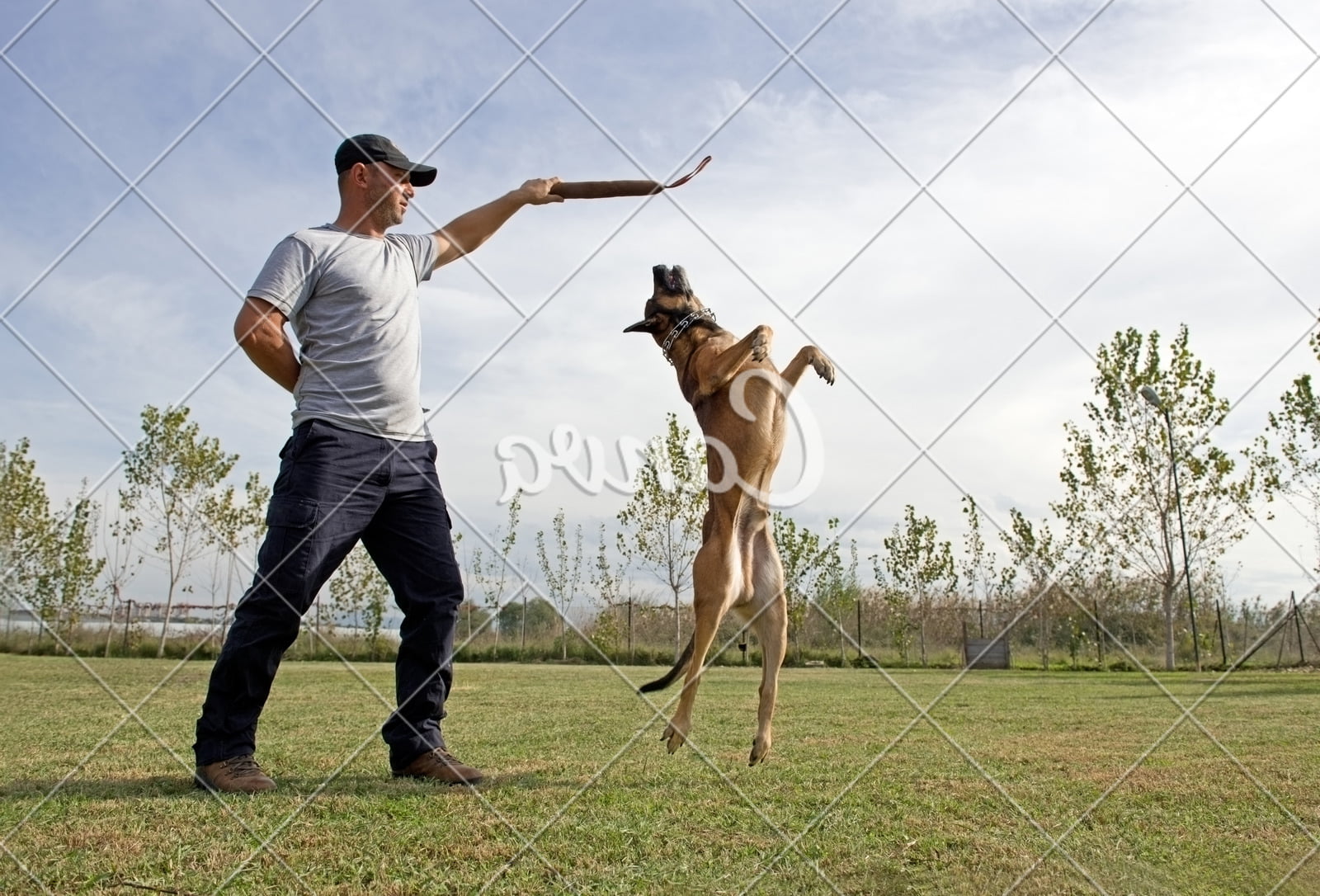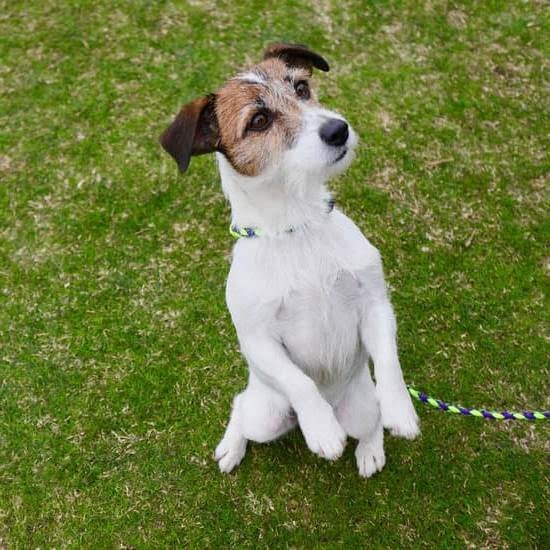Jumping is a common behavior in dogs, and while it may seem harmless, it can lead to unwanted consequences if not properly addressed. In this article, we will explore how to train a dog not to jump and understand the reasons behind this behavior. By understanding the motivations behind jumping in dogs, pet owners can effectively tackle this issue and create a well-behaved and obedient companion.
When dogs jump on people or furniture, it can be seen as an act of excitement or affection. However, it can also be a display of dominance or seeking attention. Understanding the root cause of this behavior is crucial in effectively addressing and training dogs not to jump. In this section, we will delve into the mindset of dogs when they exhibit jumping behavior and provide insights into why they engage in such actions.
By gaining a deeper understanding of the behavior of jumping in dogs, pet owners can better tailor their training methods to address the underlying reasons for this action. This section aims to shed light on the importance of comprehending the behavior of jumping in dogs as the first step towards successful training and behavioral modification.
The Negative Impact of Jumping
Jumping may seem harmless and even endearing in some cases, but it can have a negative impact on both the dog and the owner. For one, jumping can lead to accidents and injuries, especially when the dog jumps on young children or elderly individuals. Additionally, a jumping dog can cause damage to furniture and clothing with their claws. This behavior can also be off-putting to guests and visitors, making it important for your dog to learn not to jump.
In order to address this behavior, it is essential for dog owners to understand the reasons behind why dogs jump. Dogs often jump as a way of seeking attention, whether it be from their owners or from strangers. They may also jump out of excitement or as a way of greeting people. By understanding the underlying motivations for jumping, you can better address this behavior through training methods that focus on redirecting your dog’s attention and reinforcing desirable behaviors.
One effective method for training your dog not to jump is through positive reinforcement. This involves rewarding your dog for desired behaviors, such as sitting calmly instead of jumping up. Treats, praise, and other rewards can be used to communicate to your dog what behavior is expected of them. Consistency is key in this approach – make sure that everyone in the household uses the same commands and rewards when training the dog not to jump.
Establishing Leadership
Establishing leadership is essential when it comes to training your dog not to jump. Dogs are pack animals by nature, and they look for a leader to follow. If you don’t establish yourself as the leader of the pack, your dog may take on that role himself, leading to unruly behavior like jumping. It’s important to show your dog that you are the leader and that jumping is not an acceptable behavior.
One way to establish leadership is by setting clear boundaries and rules for your dog. This can be done through consistent training and positive reinforcement. When your dog understands that you are in charge, he will be more likely to listen to your commands and less likely to engage in unwanted behaviors like jumping.
In addition to setting boundaries, it’s important to provide structure and routine for your dog. Dogs thrive on consistency, and they feel more secure when they have a predictable schedule. By establishing a routine for feeding, exercise, and training, you can help your dog understand his place in the pack and reduce his inclination to jump for attention or dominance.
Another important aspect of establishing leadership is being mindful of your own behavior around your dog. Dogs are highly attuned to body language and energy, so it’s crucial to project confidence and assertiveness when interacting with your pet. By maintaining a calm and assertive demeanor, you can convey that you are the leader of the pack and that jumping is not an acceptable behavior.
Gaining respect as the leader of the pack is vital for effective training. Ultimately, showing consistent leadership through clear rules, routines, confident body language, and regular training sessions will play a crucial role in teaching your dog not to jump. By establishing yourself as a strong leader in a positive way, you can create a harmonious relationship with your furry friend while addressing unwanted jumping behavior effectively.
Positive Reinforcement Training
Jumping is a natural behavior for dogs, but it can become problematic when they do it excessively or in situations where it is not appropriate. Positive reinforcement training is an effective method for teaching your dog not to jump and encouraging them to exhibit desirable behavior instead. By using treats and rewards, you can effectively train your dog to greet people and interact with others without jumping.
One of the key principles of positive reinforcement training is to reward your dog for exhibiting the behavior you want to encourage. When it comes to preventing jumping, you can use treats and rewards to reinforce the desired behavior of keeping all four paws on the ground. This approach not only teaches your dog what you expect from them but also strengthens your bond and communication with your pet.
Below are some steps for using positive reinforcement training:
- Start by asking someone to help you with the training process.
- When your dog approaches the person, give them the command “Sit” before they have a chance to jump.
- If your dog sits instead of jumping, reward them with a treat and praise them for their good behavior.
Consistency is key when using positive reinforcement training to teach your dog not to jump. Make sure that everyone in your household follows the same approach and uses consistent commands and methods. By doing so, you can effectively communicate to your dog what behavior is expected of them.
Using treats and rewards as part of positive reinforcement training can be a powerful tool in teaching your dog not to jump. However, it’s important to remember that every dog is different, so be patient and persistent as you work with your pet. With time and consistent training, you’ll likely see improvement in your dog’s behavior.
Consistency Is Key
When it comes to training your dog not to jump, consistency is key. Dogs thrive on routine and structure, so using consistent training methods is essential in teaching them the desired behavior. Whether you’re using positive reinforcement or redirection techniques, maintaining a consistent approach will help your dog understand what is expected of them and reinforce the desired behavior.
Establishing Clear Expectations
One of the most important aspects of consistent training is establishing clear expectations for your dog. This means deciding on specific rules and boundaries regarding jumping and ensuring that everyone in your household follows the same guidelines. Inconsistency among family members can confuse your dog and make it more difficult for them to understand what is acceptable behavior.
Reinforcing Good Behavior
Consistent training methods also involve reinforcing good behavior every time. When your dog refrains from jumping, it’s important to reward them with praise, treats, or affection. By consistently reinforcing this positive behavior, your dog will learn that not jumping leads to positive outcomes, making them more likely to continue this behavior in the future.
Avoiding Mixed Messages
Inconsistent training can lead to mixed messages for your dog, causing confusion and frustration. For example, if you sometimes allow your dog to jump up on you while wearing certain clothes but then scold them for jumping up when you’re dressed differently, this sends conflicting signals. To avoid confusion, it’s crucial to maintain a clear and consistent approach to training your dog not to jump.
By being consistent in your training methods, you can effectively teach your dog not to jump and reinforce positive behaviors. Remember that patience and persistence are also crucial components of consistent training as it may take time for your dog to fully grasp the desired behavior.
Redirecting Attention
Distraction Techniques
One of the most effective ways to train a dog not to jump is by redirecting their attention to something else. When your dog is about to jump, have a favorite toy or treat handy to divert their attention. This will help them learn that jumping is not the desired behavior and that they will receive positive reinforcement for engaging in an alternative activity.
Ignoring the Behavior
Another technique for redirecting your dog’s focus away from jumping is to simply ignore the behavior. When your dog jumps, turn away and avoid making eye contact and giving any form of attention. Your dog will eventually realize that jumping does not yield the desired response and will begin seeking other ways to interact with you.
Teaching Alternative Behaviors
Training your dog to perform an alternative behavior when they are tempted to jump can also be beneficial. Teach your dog commands such as “sit” or “down” and use these commands as an alternative response when they are excited or trying to jump. By redirecting their energy into a more appropriate behavior, you can effectively discourage jumping.
Using these techniques in combination with consistent positive reinforcement and clear communication can help train your dog not to jump. Remember, patience and persistence are key when implementing these redirection methods, but with time and dedication, you can successfully teach your dog appropriate behaviors and enjoy a well-behaved pet.
Training Exercises
When it comes to training your dog not to jump, it’s important to start with basic obedience commands. Teaching your dog to sit and stay can be incredibly helpful in preventing jumping behavior. Begin by commanding your dog to sit, and then reward them with a treat and praise when they follow the command. Once they have mastered sitting, you can move on to the “stay” command, reinforcing the behavior with positive reinforcement.
Another effective exercise is to use a leash or tether when practicing not jumping. Attach the leash to your dog’s collar and hold it firmly as you approach them. If your dog tries to jump, gently pull down on the leash while giving the “sit” command.
When your dog complies and sits instead of jumping, reward them with a treat and praise. Gradually increase the distance between you and your dog as you practice this exercise, eventually being able to ask them not to jump from across the room.
It’s also important to teach your dog an alternative behavior to jumping, such as “four on the floor.” Whenever your dog approaches someone and remains standing with all four paws on the ground, reward them with a treat and praise. This will reinforce the desired behavior while redirecting their attention away from jumping. Consistency is key in these training exercises, so make sure that everyone in your household uses the same commands and reinforces good behavior consistently.
| Training Exercise | Description |
|---|---|
| Basic Obedience Commands | Teach sit and stay commands using positive reinforcement. |
| Leash Training | Use a leash or tether to reinforce sitting instead of jumping. |
| Alternative Behavior | Teach an alternative behavior such as “four on the floor.” |
Patience and Persistence
Training a dog not to jump requires patience and persistence. This process can take time, but with consistent effort, your dog can learn to greet people calmly and respectfully without jumping. Here are some tips to help you continuously reinforce good behavior in your dog:
- Be Calm and Assertive: When correcting your dog’s behavior, it’s essential to remain calm and assertive. Dogs respond well to confident leadership and are more likely to follow commands from someone they see as a leader.
- Use Positive Reinforcement: Reward your dog with treats, praise, or toys when they greet someone without jumping. Positive reinforcement helps them associate good behavior with rewards and encourages them to continue behaving appropriately.
- Set Clear Boundaries: Consistency is key when training a dog not to jump. Set clear boundaries from the beginning and ensure that everyone in the household follows the same rules. If jumping is not allowed, it should never be tolerated, regardless of who the visitor is.
Troubleshooting Common Challenges
Training a dog not to jump may come with challenges along the way. It’s important to address these challenges promptly and adjust your training methods as needed. Here are some common issues you may encounter and how to resolve them:
- Overexcitement: If your dog becomes overly excited when greeting guests, remove them from the situation until they calm down. Once they are calm, allow them to approach their visitors again while reinforcing positive behavior with treats or praise.
- Visitor Encouragement: Educate visitors on how to interact with your dog. Instruct them not to encourage jumping by turning away or stepping back if the dog tries to jump on them. Consistent responses from all visitors will help reinforce the training you’re providing.
- Consistency Issues: If there are multiple family members involved in the training process, it’s crucial that everyone remains consistent in their approach. Inconsistencies can lead to confusion for the dog and hinder progress in training.
By implementing these tips and being patient and persistent in your training efforts, you can effectively teach your dog not to jump and enjoy the rewards of a well-behaved pet. Remember that every dog is different, so customizing your approach based on your pet’s personality will yield better results in the long run.
Troubleshooting
Training a dog not to jump can be a challenging process, and many dog owners may encounter common challenges along the way. One of the most common issues is inconsistency in training methods. If different family members or trainers use different approaches to discourage jumping, it can confuse the dog and hinder progress. To address this challenge, it is essential to establish clear communication and consistency among everyone involved in the dog’s training.
Another common challenge when training a dog not to jump is managing excitement and energy levels. Some dogs naturally have high energy or become overly excited in certain situations, making it more difficult for them to control their impulses to jump. In these cases, it’s important to incorporate regular exercise and playtime into their routine to help burn off excess energy and reduce the likelihood of jumping behavior.
Additionally, some dogs may exhibit stubbornness or resistance when learning new behaviors, including not jumping. This can be frustrating for dog owners, but it’s important to remain patient and persistent. Consistent positive reinforcement, using treats and praise, can help motivate your dog to understand that not jumping results in rewards. It may take time and repetition, but with patience and consistency, even the most stubborn dogs can learn how to control their urge to jump.
Addressing these common challenges when training a dog not to jump requires understanding the individual personality and needs of your canine companion. By recognizing these challenges and implementing strategies tailored to your specific dog, you can effectively overcome obstacles in the training process and ultimately achieve success in curbing unwanted jumping behavior.
Conclusion
Training your dog not to jump is an essential part of responsible pet ownership. By understanding the behavior of jumping in dogs and the negative impact it can have, you can take steps to establish leadership and use positive reinforcement training to teach your dog not to jump.
Consistency and patience are key, as well as redirecting attention and implementing training exercises. By doing so, you can enjoy the benefits of a well-behaved pet and a stronger bond with your furry companion.
By training your dog not to jump, you are not only ensuring the comfort and safety of yourself and others, but also promoting good behavior in your pet. Through consistent training methods and positive reinforcement, you are teaching your dog appropriate manners and creating a harmonious living environment. The rewards of a well-behaved pet include improved relationships with guests, less stress for both you and your dog, and overall better obedience.
In conclusion, by following the techniques outlined in this article, you can effectively train your dog not to jump. With patience, persistence, and the use of positive reinforcement training methods, you can address common challenges and enjoy the benefits of having a well-behaved pet. Remember that understanding the behavior of jumping in dogs is crucial for successful training – so start implementing these tips today for a happier, more obedient canine companion.
Frequently Asked Questions
How Do I Train My Dog Not to Jump Up?
Training a dog not to jump up requires consistent and positive reinforcement. One approach is to ignore the jumping and only give attention or treats when the dog has all four paws on the ground. Another method involves teaching an alternative behavior, such as sitting, and rewarding that instead of jumping.
What Is the Dog Command for No Jumping?
The command “off” or “down” can be used to discourage jumping in dogs. When a dog starts to jump, giving the command firmly and consistently, along with redirecting their attention to a more appropriate activity, can help deter the behavior over time.
How Do You Discipline a Dog for Jumping on the Counter?
Disciplining a dog for jumping on the counter should focus on preventing the behavior rather than punishing after the fact.
This can involve strategies such as keeping countertops clean and free of food, using deterrents like double-sided tape or motion-activated alarms, providing plenty of mental and physical exercise for the dog, and redirecting their attention with appropriate toys or activities when they show interest in jumping onto counters.

Welcome to the blog! I am a professional dog trainer and have been working with dogs for many years. In this blog, I will be discussing various topics related to dog training, including tips, tricks, and advice. I hope you find this information helpful and informative. Thanks for reading!





